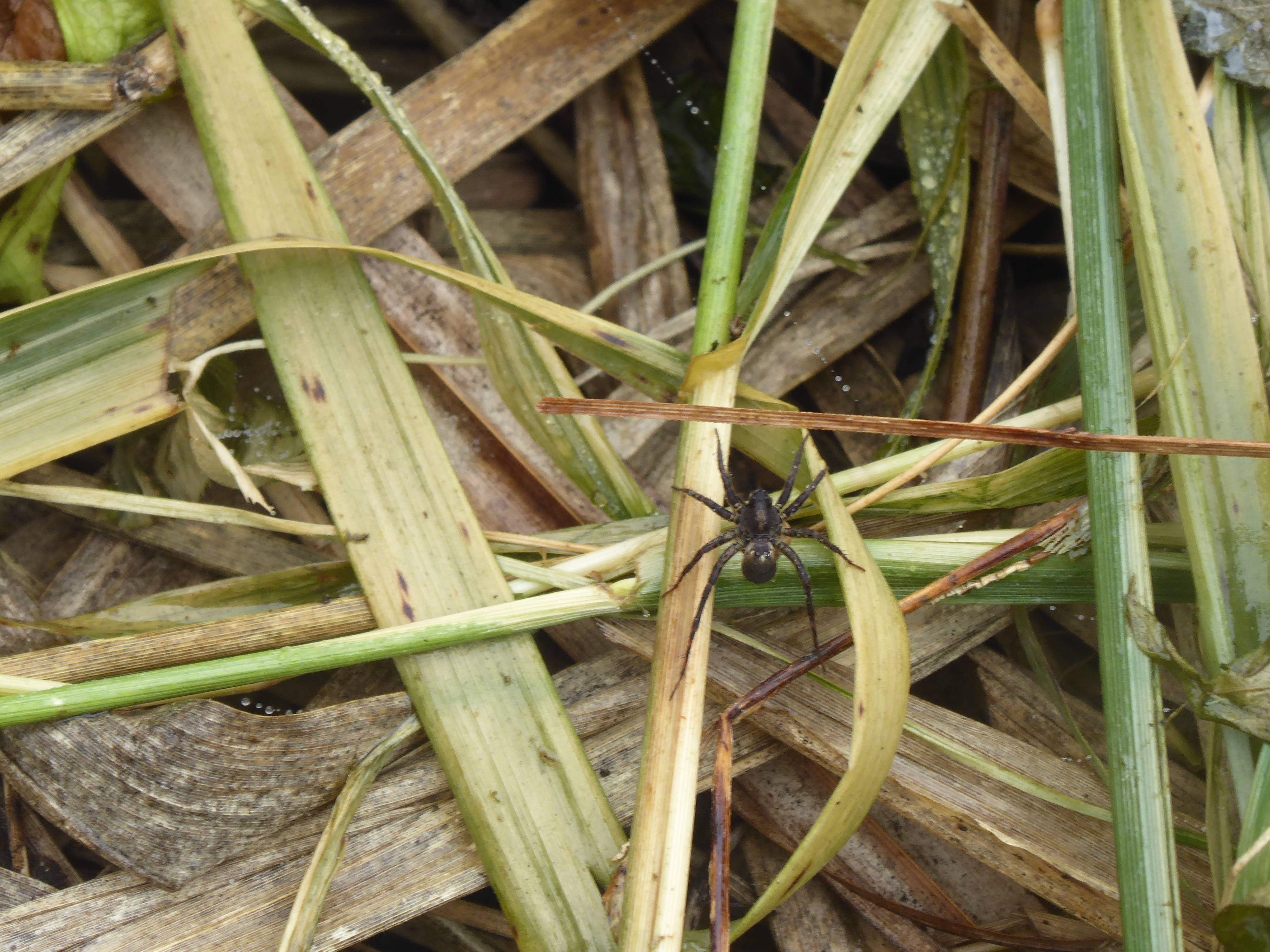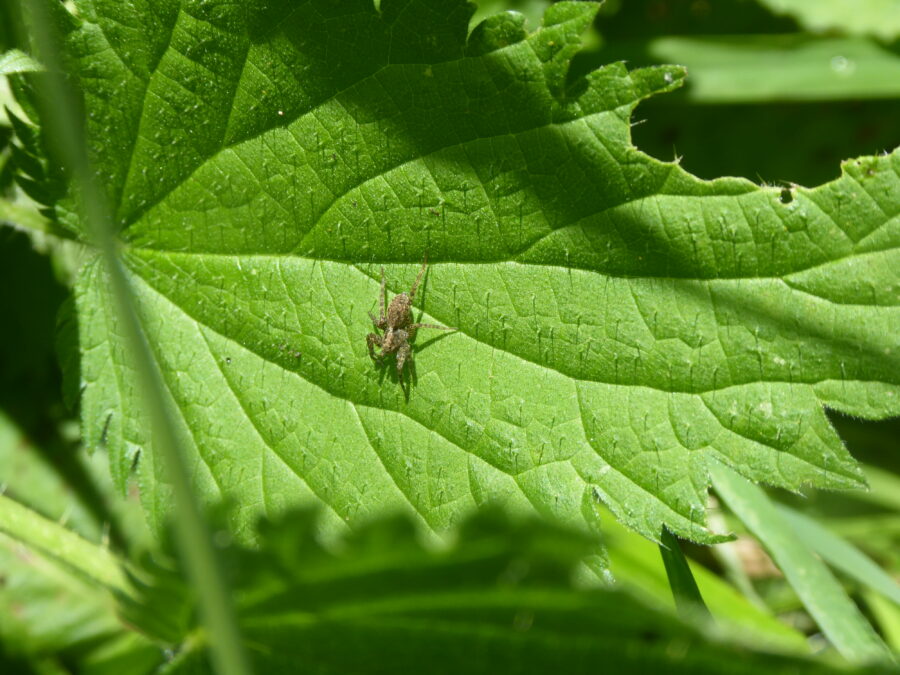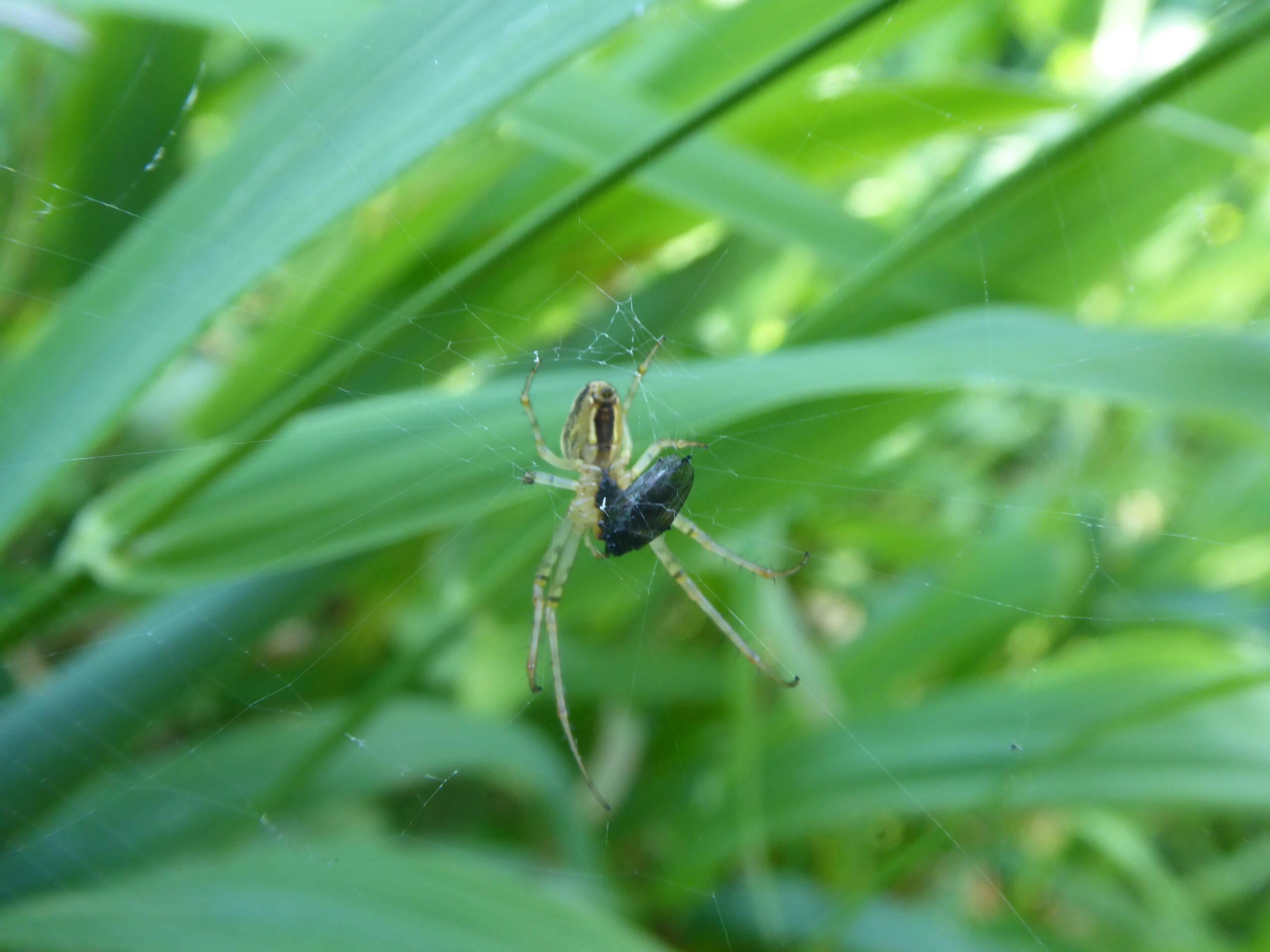This is a common orb-weaver spider with some prey. Orb-weavers are so-called because they make circular webs. There is an orb-weaver called a missing sector orb-weaver which builds a web with a missing quadrant and only a single thread attaching the web from that quarter. You might be able to see from the photo that this web is complete, so it is a common orb-weaver.
There are two variants of the Common Orb-weaver Spider Metallina mengei has a longer dark stripe on its abdomen than M. segmentate. This is the former.

Wolf spiders were running over a pile of dry grass in the far left-hand corner of the watermeadow. This is a female carrying an egg sack under her body. Around one hundred baby spiders will hatch dramatically and hitch a lift on her back for a few days before floating away on silk parachutes. Wolf-spiders are so-called as they hunt down prey, rather than catching it in a web. There are several species of wolf spider, but it is difficult to tell them apart without close examination. This one was black and bristly.

This is a different wolf spider. It was tweedy grey and hairy. It looked like a Pardosa milvina, or shore spider, which is found in wetlands but in North America, so it must be a European variant of that sub-species, as I couldn’t find anything about it being an invasive species to the UK.
